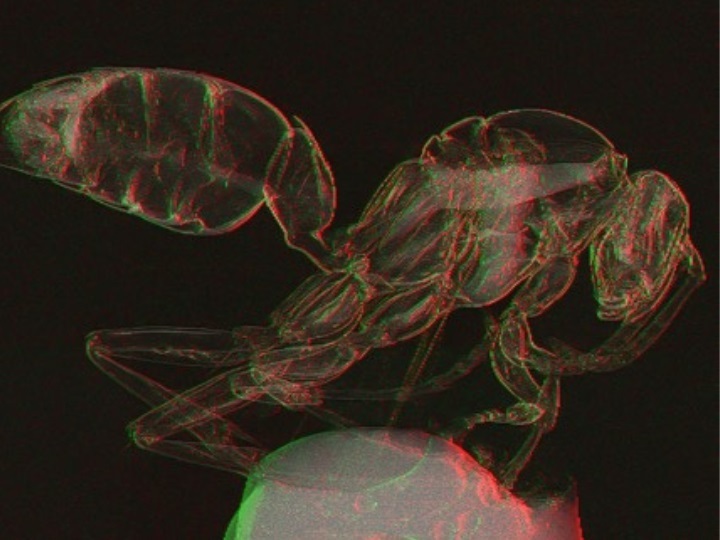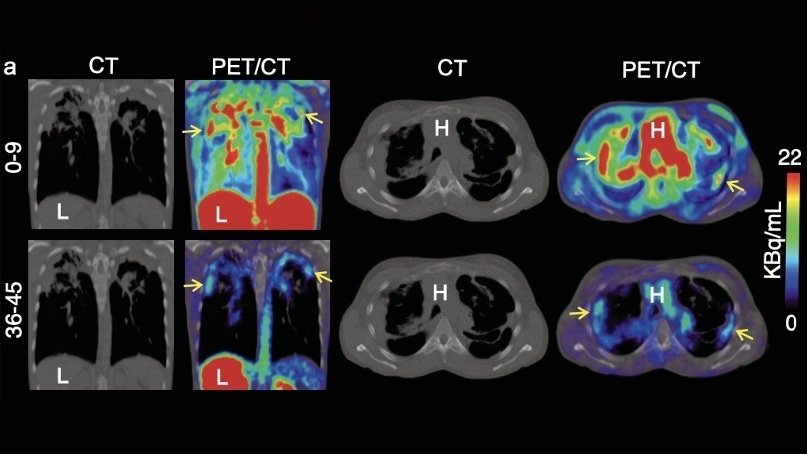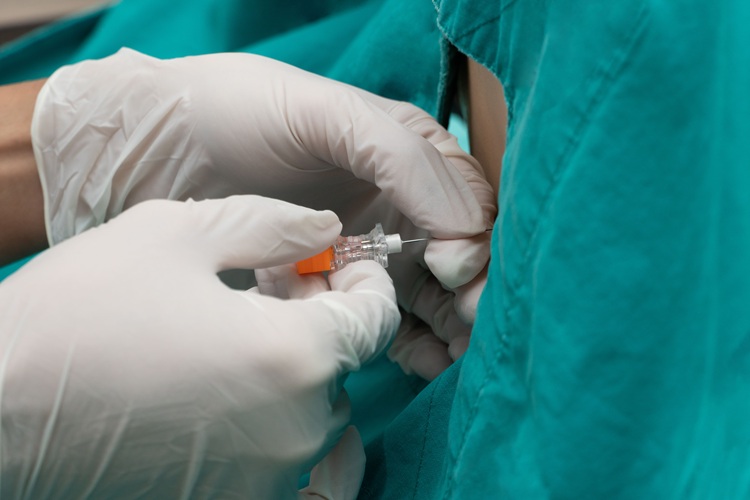Groundbreaking X-Ray Imaging Technique Could Improve Medical Diagnostics
|
By MedImaging International staff writers Posted on 19 Aug 2024 |

Older X-ray technology depends on the absorption of X-rays to generate images, which can be challenging when differentiating materials of similar density. This often results in low contrast images, making it difficult to distinguish between different substances, posing challenges in various applications including medical imaging. X-ray phase contrast imaging (PCI), which leverages relative phase changes as X-rays pass through an object, has become increasingly popular for its ability to enhance contrast, particularly for soft tissues. The single-mask differential method is notable among various PCI techniques for its simplicity and effectiveness, offering high-contrast imaging more efficiently and with lower radiation doses. Now, researchers have introduced a novel light transport model for a single-mask phase imaging system that enhances non-destructive deep imaging for visibility of light-element materials, including soft tissues such as cancers. This groundbreaking advancement in X-ray imaging technology could significantly improve medical diagnostics.
The new light transport model developed by researchers at the University of Houston (Houston, TX, USA) significantly enhances the capability of single-mask phase imaging systems, enabling non-destructive deep imaging that improves the visibility of light-element materials, such as soft tissues in medical diagnostics. This new model, detailed in a paper featured on the cover of Optica, facilitates the understanding of how contrast forms and how different contrast features interact within the acquired images. It enables the extraction of images that incorporate two distinct types of contrast mechanisms from a single exposure, marking a major improvement over conventional methods.
The innovative design utilizes an X-ray mask with periodic slits that align with the detector pixels to enhance edge contrast and capture differential phase information, clarifying variations between materials more distinctly. This advancement simplifies the imaging setup by reducing the reliance on high-resolution detectors or elaborate, multi-shot processes. The researchers have conducted extensive simulations and tested this model on a laboratory benchtop X-ray imaging system developed in-house. Their future objectives include adapting this technology for portable systems and retrofitting existing imaging setups, with plans to implement and evaluate it in practical settings such as hospitals.
“Our research opens up new possibilities for X-ray imaging by providing a simple, effective and low-cost method for enhancing image contrast which is a critical need for non-destructive deep imaging,” said Mini Das, Moores professor at UH’s College of Natural Sciences and Mathematics and Cullen College of Engineering. “It makes phase contrast imaging more accessible and practical, leading to better diagnostics and improved security screening. It is a versatile solution for a wide range of imaging challenges. We are in the process of testing the feasibility for a number of applications.”
Related Links:
University of Houston
Latest Radiography News
- AI Detects Hidden Heart Disease in Existing CT Chest Scans
- Ultra-Lightweight AI Model Runs Without GPU to Break Barriers in Lung Cancer Diagnosis
- AI Radiology Tool Identifies Life-Threatening Conditions in Milliseconds

- Machine Learning Algorithm Identifies Cardiovascular Risk from Routine Bone Density Scans
- AI Improves Early Detection of Interval Breast Cancers
- World's Largest Class Single Crystal Diamond Radiation Detector Opens New Possibilities for Diagnostic Imaging
- AI-Powered Imaging Technique Shows Promise in Evaluating Patients for PCI
- Higher Chest X-Ray Usage Catches Lung Cancer Earlier and Improves Survival
- AI-Powered Mammograms Predict Cardiovascular Risk
- Generative AI Model Significantly Reduces Chest X-Ray Reading Time
- AI-Powered Mammography Screening Boosts Cancer Detection in Single-Reader Settings
- Photon Counting Detectors Promise Fast Color X-Ray Images
- AI Can Flag Mammograms for Supplemental MRI
- 3D CT Imaging from Single X-Ray Projection Reduces Radiation Exposure
- AI Method Accurately Predicts Breast Cancer Risk by Analyzing Multiple Mammograms
- Printable Organic X-Ray Sensors Could Transform Treatment for Cancer Patients
Channels
MRI
view channel
New MRI Technique Reveals Hidden Heart Issues
Traditional exercise stress tests conducted within an MRI machine require patients to lie flat, a position that artificially improves heart function by increasing stroke volume due to gravity-driven blood... Read more
Shorter MRI Exam Effectively Detects Cancer in Dense Breasts
Women with extremely dense breasts face a higher risk of missed breast cancer diagnoses, as dense glandular and fibrous tissue can obscure tumors on mammograms. While breast MRI is recommended for supplemental... Read moreUltrasound
view channel
Wireless Chronic Pain Management Device to Reduce Need for Painkillers and Surgery
Chronic pain affects millions of people globally, often leading to long-term disability and dependence on opioid medications, which carry significant risks of side effects and addiction.... Read more
New Medical Ultrasound Imaging Technique Enables ICU Bedside Monitoring
Ultrasound computed tomography (USCT) presents a safer alternative to imaging techniques like X-ray computed tomography (commonly known as CT or “CAT” scans) because it does not produce ionizing radiation.... Read moreNuclear Medicine
view channel
Novel Bacteria-Specific PET Imaging Approach Detects Hard-To-Diagnose Lung Infections
Mycobacteroides abscessus is a rapidly growing mycobacteria that primarily affects immunocompromised patients and those with underlying lung diseases, such as cystic fibrosis or chronic obstructive pulmonary... Read more
New Imaging Approach Could Reduce Need for Biopsies to Monitor Prostate Cancer
Prostate cancer is the second leading cause of cancer-related death among men in the United States. However, the majority of older men diagnosed with prostate cancer have slow-growing, low-risk forms of... Read moreGeneral/Advanced Imaging
view channel
CT Colonography Beats Stool DNA Testing for Colon Cancer Screening
As colorectal cancer remains the second leading cause of cancer-related deaths worldwide, early detection through screening is vital to reduce advanced-stage treatments and associated costs.... Read more
First-Of-Its-Kind Wearable Device Offers Revolutionary Alternative to CT Scans
Currently, patients with conditions such as heart failure, pneumonia, or respiratory distress often require multiple imaging procedures that are intermittent, disruptive, and involve high levels of radiation.... Read more
AI-Based CT Scan Analysis Predicts Early-Stage Kidney Damage Due to Cancer Treatments
Radioligand therapy, a form of targeted nuclear medicine, has recently gained attention for its potential in treating specific types of tumors. However, one of the potential side effects of this therapy... Read moreImaging IT
view channel
New Google Cloud Medical Imaging Suite Makes Imaging Healthcare Data More Accessible
Medical imaging is a critical tool used to diagnose patients, and there are billions of medical images scanned globally each year. Imaging data accounts for about 90% of all healthcare data1 and, until... Read more
Global AI in Medical Diagnostics Market to Be Driven by Demand for Image Recognition in Radiology
The global artificial intelligence (AI) in medical diagnostics market is expanding with early disease detection being one of its key applications and image recognition becoming a compelling consumer proposition... Read moreIndustry News
view channel
GE HealthCare and NVIDIA Collaboration to Reimagine Diagnostic Imaging
GE HealthCare (Chicago, IL, USA) has entered into a collaboration with NVIDIA (Santa Clara, CA, USA), expanding the existing relationship between the two companies to focus on pioneering innovation in... Read more
Patient-Specific 3D-Printed Phantoms Transform CT Imaging
New research has highlighted how anatomically precise, patient-specific 3D-printed phantoms are proving to be scalable, cost-effective, and efficient tools in the development of new CT scan algorithms... Read more
Siemens and Sectra Collaborate on Enhancing Radiology Workflows
Siemens Healthineers (Forchheim, Germany) and Sectra (Linköping, Sweden) have entered into a collaboration aimed at enhancing radiologists' diagnostic capabilities and, in turn, improving patient care... Read more















.jpeg)




